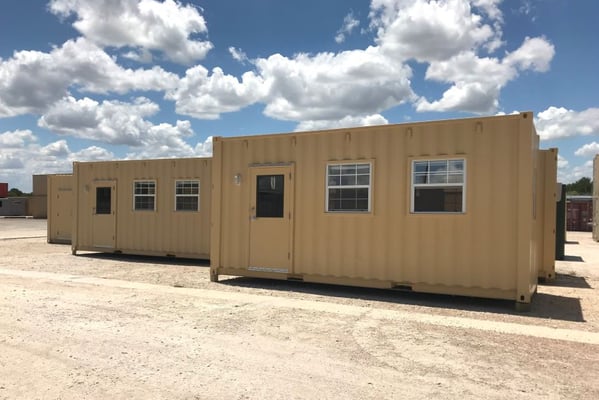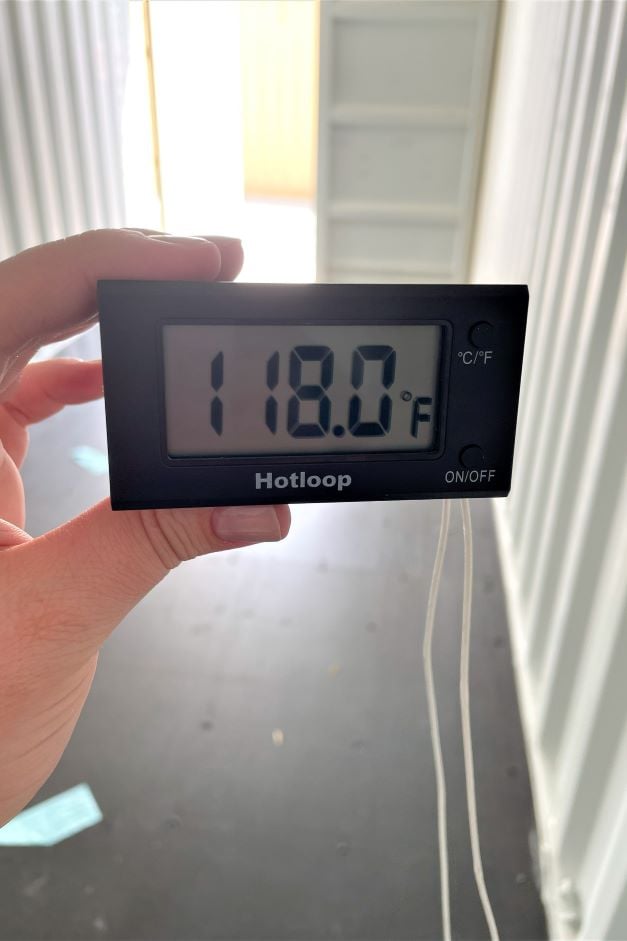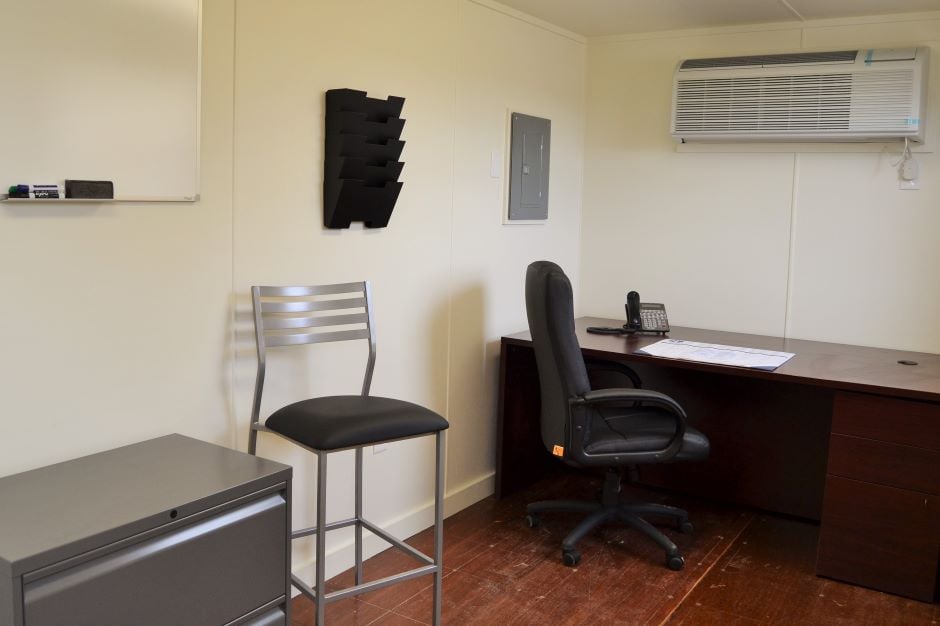How Modified Shipping Container Workspaces Beat the Heat
 Becca Hubert | Aug 9, 2023
Becca Hubert | Aug 9, 2023

Modified shipping container offices are an intriguing concept, gaining popularity as affordable, portable workspaces. But when you ask employees to make themselves comfortable in a container-turned-office, they might object on the grounds that it’s a steel box baking in the sun. That’s no small consideration, especially as summer temperatures reach all-time highs. Fear not – we’re here to explain how cooling a shipping container and transforming it into a comfortable workspace is possible.

An unmodified shipping container does get very hot in summer temperatures, that’s for sure. Take an untouched, 20-foot container on our site, for example. Before our production team started transforming it into a 20-foot open office, the interior temperature was a stifling 118°F on a 99°F day.
From there, our in-house production team will start the skilled process of modifying the container into a usable workspace. There are two substantial modifications that take this container from a hot steel box to a cool, comfortable working environment: insulation and air conditioning.
Insulation Is a Must
If you’re using a modified shipping container as a workspace, insulation is non-negotiable. We offer several kinds of insulation, but the most common choice for container workspaces is batt insulation. You may recognize the white or pink rolls of standard fiberglass insulation from attic spaces or homes under construction. Our team adds framing to the interior of the container, then applies 3.5-inch batt insulation to the walls, and 6 inches to the ceiling to offset overhead heat from the sun.

We choose batt insulation for our in-stock offices and workspace floor plans because it’s cost-efficient and has a high R-value (the measurement of a material’s capacity to resist heat flow). To put this into perspective, the batt insulation on the walls and ceiling has R-values of 13 and 19, respectively, whereas 1-inch Styrofoam insulation for a simple storage container has an R-value of just 4.
While the corten steel exterior of a modified container office might absorb heat on a triple-digit day, the thick layers of batt insulation covered by gypsum drywall defend the interior from more oppressive heat. In fact, when we tested it, an insulated container measured 17 degrees cooler than the un-insulated container of the same size.
Power Up the Air Conditioning
You know the feeling you get when you walk into a crisp, cool hotel room, and you see the white air conditioning unit humming away at the window? That’s the same equipment that goes into one of our modified container offices.

Our production team cuts and fortifies openings for these packaged terminal air conditioner (PTAC) units. Once we’ve run power to the container, the 1.5 ton, 15k unit can start cooling a 20 or 40-foot container office. These PTACs are unobtrusive, powerful, and low maintenance. And they make those containers just as cool, and downright cold, as a hotel room.
Extra Cooling Measures
The standard modifications we make to our in-stock office containers and workspace floor plans are generally more than enough to keep workers cool and comfortable. But if you have a special project that requires more attention to cooling a shipping container for a workspace, we have solutions.
Heavy duty HVAC - The compact PTAC unit is powerful, but occasionally clients opt for the larger, 2-ton HVAC system. These units are ideal in containers that house heat-producing equipment, but some clients prefer them for very remote, very hot job sites, to keep their employees cool.
Thoughtful paint choices - Dark colors absorb heat more than light colors. While the comfort level in a finished-out container with a dark exterior may not be noticeably different from one with a light exterior, a lighter color lends itself more to efficient thermal performance. Some clients even opt to paint the roof white to help offset heat gain.
The modifications we make to cool a shipping container are like stick-built structures: framing, adding insulation, installing drywall, running power, cooling with an AC unit. But the cost and time it takes to create a container workspace solution are typically much less than an onsite build - all without sacrificing comfort for workers.
Are you considering a modified shipping container office for your company? From rural job sites to apartment leasing offices, we’ve helped thousands of customers keep their workforce cool and comfortable in their modified shipping container workspace, even in the most stifling temperatures. Reach out to our team at 877-704-0177 or email us at Sales@FalconStructures.com.
SUBSCRIBE
- Shipping Container Modifications
- How-Tos
- Workspace
- Commercial Construction
- Multi-Container Buildings
- Storage Solutions
- Industrial Enclosures
- Bathrooms & Locker Rooms
- Oil & Gas
- Climate Control
- Green Building
- Living Space
- Industry Insight
- Military & Training Facilities
- Water Treatment Solutions
- Energy
THINK INSIDE THE BOX®
WITH OUR BLOG
Get everything from shipping container basics, to detailed how-tos and industry news in our weekly blog. Stay inspired and subscribe!
RELATED BLOGS

How to Choose Safe, Secure, and Long-Lasting Oilfield Housing
Becca Hubert | Jun 26, 2024 | 5 min read
READ MORE

Blueprint for Better Workforce Housing: Shipping Container Benefits
Becca Hubert | Nov 13, 2024 | 4 min read
READ MORE

How Conex Boxes Are Solving Problems in Your Industry
Becca Hubert | May 1, 2024 | 4 min read
READ MORE